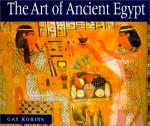|
This section contains 468 words (approx. 2 pages at 300 words per page) |

|
Functions. Gardens were a common component of an ancient Egyptian house. They provided food, medicine, flowers, and a place to enjoy leisure time—especially for wealthy Egyptians. Gardens symbolized the well-ordered cosmos when they were represented in tomb paintings. Perhaps educated Egyptians were aware of this idea when they planned and enjoyed their gardens in life.
Plans. Gardens were formally arranged in ancient Egypt. They contained a pool with fish and lotus flowers. At the edge of the pool were papyrus plants, rushes, cornflowers, poppies, and mandrake. Shrubs and small bushes stood beyond the flowers. Trees often found in gardens were fig, sycamore fig, and willow. Acacia and date palm trees often alternated in a row around the shrubs and small trees. Grape arbors also were included, suggesting the possibility of locally produced wine for the wealthy.
Products. Garden products were...
|
This section contains 468 words (approx. 2 pages at 300 words per page) |

|




